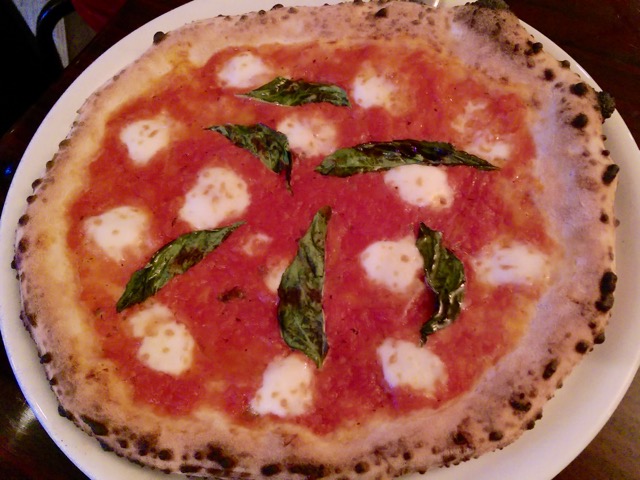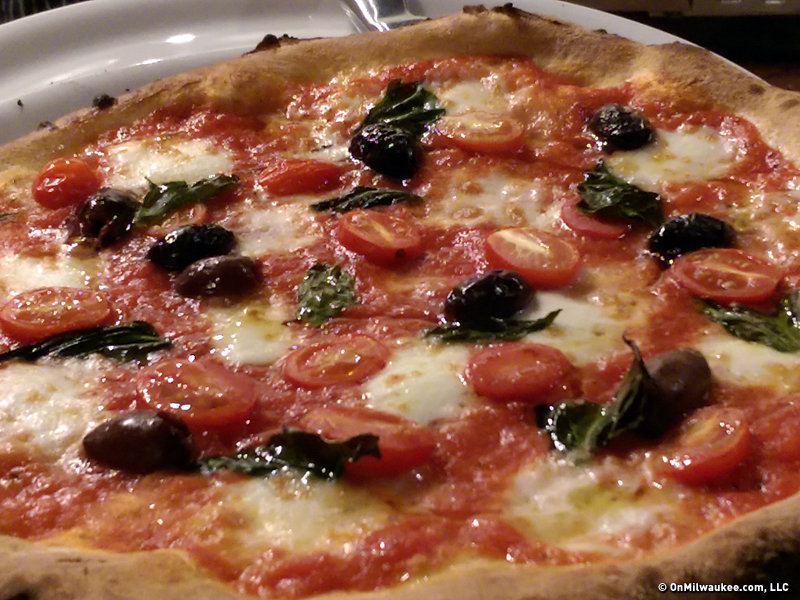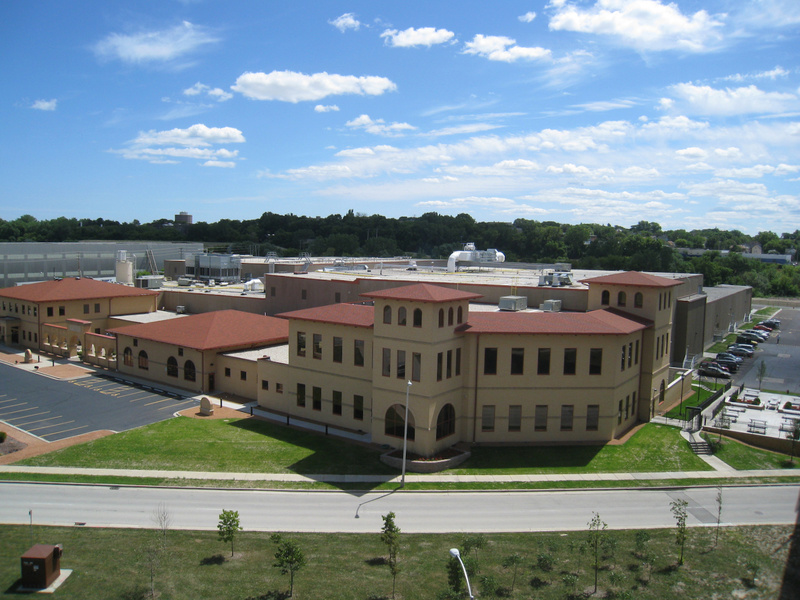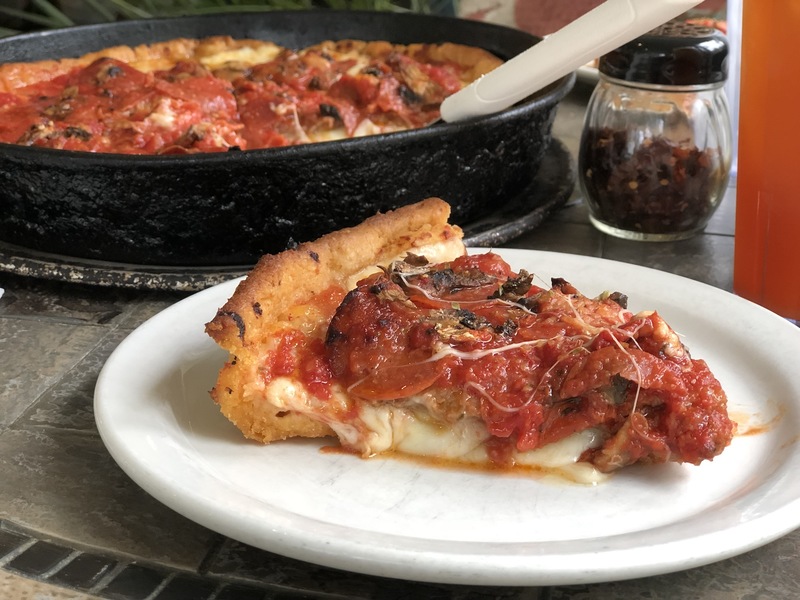My introduction to Carini’s La Conca D’Oro, 3468 N. Oakland Avenue, occurred a few years ago when I was in the area and saw they were open for lunch. With a lot of help from his brothers and other family members, Peter Carini opened his restaurant in 1996, renovating, updating and adding improvements over the years – including a wood burning pizza oven, imported from Naples, Italy last year.
The name La Conca D’Oro is derived from Palermo, Italy, where Carini’s father was a fisherman. When the fisherman looked toward Palermo from the sea, it looked like a golden shell, a conca d’oro.
Carini moved from Porticello, a fishing village near Palermo, to Milwaukee in 1966 because his grandfather had already been settled here. He didn’t speak any English but learned while working, initially as a paper boy and later in the kitchen of the Milwaukee Athletic Club, where he started as a dishwasher and worked his way up to executive chef after 16 years. Much of that time was spent working with immigrant German cooks and chefs, crediting them with much of what he learned about cooking.
After working as executive chef from 1975 to '84, he left to work at Zorba’s in Brookfield and Nico’s in Franklin until he decided to open his own restaurant, which he currently co-owns with his wife Janice. She runs the front of the house and keeps the books.
A friend suggested that Carini consider adding pizza to the menu because it provided better margins, but Carini wanted his pizza to be authentic and separate the restaurant from the other pizzerias in the area. When he purchased the wood burning oven, he called his son, Gregg, to share the news. Gregg was working in Nashville at the time with a couple of gentlemen from Naples, Italy – not Florida.

Gregg Carini went to work studying Neapolitan pizzas and looking into the VPN (Verace Pizza Napoletana, or "True Neapolitan Pizza") certification process. Gregg Carini attended the culinary program at MATC and worked at the Wisconsin Club as well as restaurants in Florida and Tennessee before returning to Milwaukee last year.
I was able to spend a few minutes with Gregg Carini while he was making pizzas and looked forward to sitting and placing my order. I reviewed the menu and found several items I’d like to return for, such as one of the five types of spiedini, Sicilian steak or the melanzane pangratato, a dish with fried eggplant with chili flakes and garlic simmered in their house marinara sauce tossed with spaghetti and topped with breadcrumbs. The menu also features a lot of seafood dishes due to Carini’s knowledge of seafood that developed when he lived in Porticello.
The pizza section of the menu is broken into two groups: pizza rosse with tomato sauce and pizza bianca without pizza sauce. Pizzas range in price from $8 for the foccacia, topped with Carini’s garlic olive oil, oregano and Parmigiano-Reggiano, to $16 for the quattro gusti, topped with tomato sauce, mushrooms, artichokes, prosciutto cotto, kalamata olives and fresh mozzarella. All of the pizzas are the same size, and additional toppings range from $1 to $2.

I started with the margherita pizza because when you’re getting Neapolitan pizza, the margherita is the poster child. It’s simple in that there are very few toppings, and they are lightly applied, just tomato sauce, fresh mozzarella and basil.
The sauce had a fresh tomato taste and was slightly sweet. It is made from scratch using San Marzano tomatoes imported from Italy in keeping with the VPN rules. The flour used to make the pizza dough is also imported from Italy.
The crust was crisp and chewy with the leopard spotting around the edges that you would typically find on a crust baked in a wood burning oven. The perfect Neapolitan crust is impacted by the temperature of the oven, how long the pizza is baked and – even before the dough becomes a crust – the humidity, so all of these components are examples of what must be accounted for when making pizza the VPN way. Carini’s pizzas are baked for 90 seconds in a 900 degree oven that is closely tended to because even the slightest variance from the cook time can alter the integrity of the pizza.
The other Neapolitan pizza I like to order is the diavola, which comes topped with the housemade tomato sauce, Italian sausage, soppressata, Calabrian chili and fresh mozzarella. The Italian sausage had a slight kick with a good flavor and is made locally by Carini’s cousin Vinny, who used to own a pizzeria. The soppressata is a spicy salami and is also imported from Italy, in addition to the parmesan and prosciutto. The Calabrian chili pepper slices were applied enough to enhance the flavor profile and add a little heat without overwhelming the palate.

All of the pizzas are 11-12 inches in diameter and served on 13-inch plates that were imported from Italy. The pies fit perfectly on these plates which make cutting them easier. One of the unique features of Carini’s pizza is that they are served uncut, just like the Neapolitan pizzas are served in Naples.
I learned about the uncut pizzas from Carini’s website before I visited, so I Googled how to eat an uncut Neapolitan pizza. I learned that the proper technique is to cut the pie into quarters, or four big slices if you prefer. Then fold the slice down the center to eat it.
Hey, who do we know that folds their crisp and chewy pizza slices down the center to eat them? Now we know where they got that from!
The Carini family plans to continue working toward a VPN certification. Scratch cooking is its focus, so it seems natural to follow this path for the pizzas. One of the next steps is to replace the mixer with one that meets the VPN standards.
Gregg Carini has manned the pizza oven since the beginning and continues to learn, share his knowledge with his father, and enhance his craft every day. I enjoyed my pizzas on my visit and look forward to monitoring their journey to become the first VPN certified restaurant in Milwaukee.
I graduated from Rufus King High School and the University of Wisconsin-Whitewater with a business degree.
My true passion for Milwaukee probably started after I joined the Young Professionals of Milwaukee (now called FUEL Milwaukee) which just celebrated its one year anniversary at the time. The events that I attended, and sometimes organized, really opened my eyes to what Milwaukee had to offer, as well as its potential for the future. So for the past, present, and future FUEL Milwaukee corporate sponsors out there, that organization does produce results (editorial)!
I love all of the Milwaukee Sports teams, professional and amateur. I love the Milwaukee arts scene and all of the festivals. I love that you can find a free concert in the summer just about every day of the week. I love the various neighborhoods around the Milwaukee area and the unique characteristics that they offer. I love the people who take the time to tell us about those unique characteristics. I have to hold my breath and count to ten when someone tells me that there is nothing to do in Milwaukee. Then I prove them wrong.
Most of all, I love the Milwaukee dining scene. I love how it continues to evolve with modern dishes and new trends while the classic restaurants continue to remind us that great food doesn't have to be "fancy schmancy." However, I also love the chefs that create the "fancy schmancy" dishes and continue to challenge themselves and Milwaukee diners with dishes we've never seen before.
Our media provides attention to the new restaurants, which is great, but I don't like seeing the older great restaurants close their doors (Don Quijote, African Hut) because they've been forgotten, so I try to do my part to let Milwaukeeans know that they're still out there, too. I do that through social media, online reviews, and a dinner club I run for my friends, where we visit restaurants they haven't heard of before or try ethnic cuisine they haven't had before.
My dream is that one day I can mention a great experience in Milwaukee and not have someone respond with "have you been to Chicago?" I don't like those people very much.







